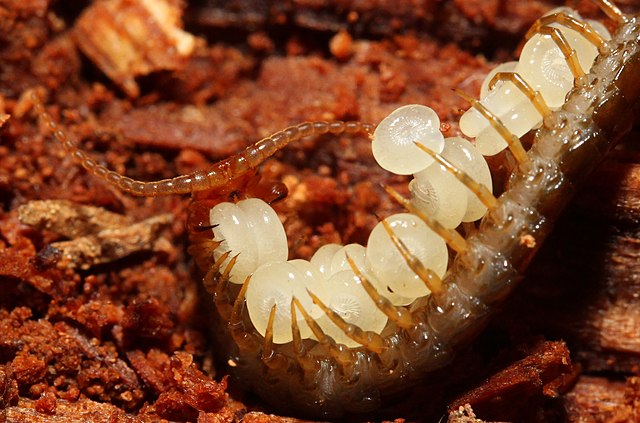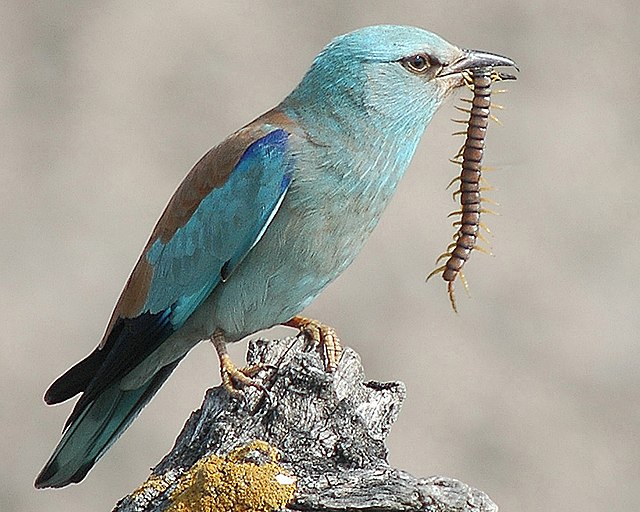Scolopendra gigantea, also known as the Peruvian giant yellow-leg centipede or Amazonian giant centipede, is a centipede in the genus Scolopendra. It is the largest centipede species in the world, with a length exceeding 30 centimetres (12 in). Specimens may have 21 or 23 segments. It is found in various places throughout South America and the extreme south Caribbean, where it preys on a wide variety of animals, including other sizable arthropods, amphibians, mammals and reptiles.
Scolopendra gigantea
Trinidad, West Indies
Centipedes are predatory arthropods belonging to the class Chilopoda of the subphylum Myriapoda, an arthropod group which includes millipedes and other multi-legged animals. Centipedes are elongated segmented (metameric) creatures with one pair of legs per body segment. All centipedes are venomous and can inflict painful stings, injecting their venom through pincer-like appendages known as forcipules or toxicognaths, which are actually modified legs instead of fangs. Despite the name, no centipede has exactly 100 pairs of legs; the number of pairs of legs is an odd number that ranges from 15 pairs to 191 pairs.
The forcipules of Eupolybothrus cavernicolus (Lithobiidae)
A collage showing the ultimate legs of various centipedes. From top left, proceeding clockwise: Rhysida spp., Scolopocryptops trogloclaudatus, Scolopenda dehaani, Lithobius proximus, Lithobius forficatus, Scolopendra cingulata.
A centipede mother protecting her first instar offspring
A centipede (Scolopendra cingulata) being eaten by a European roller






